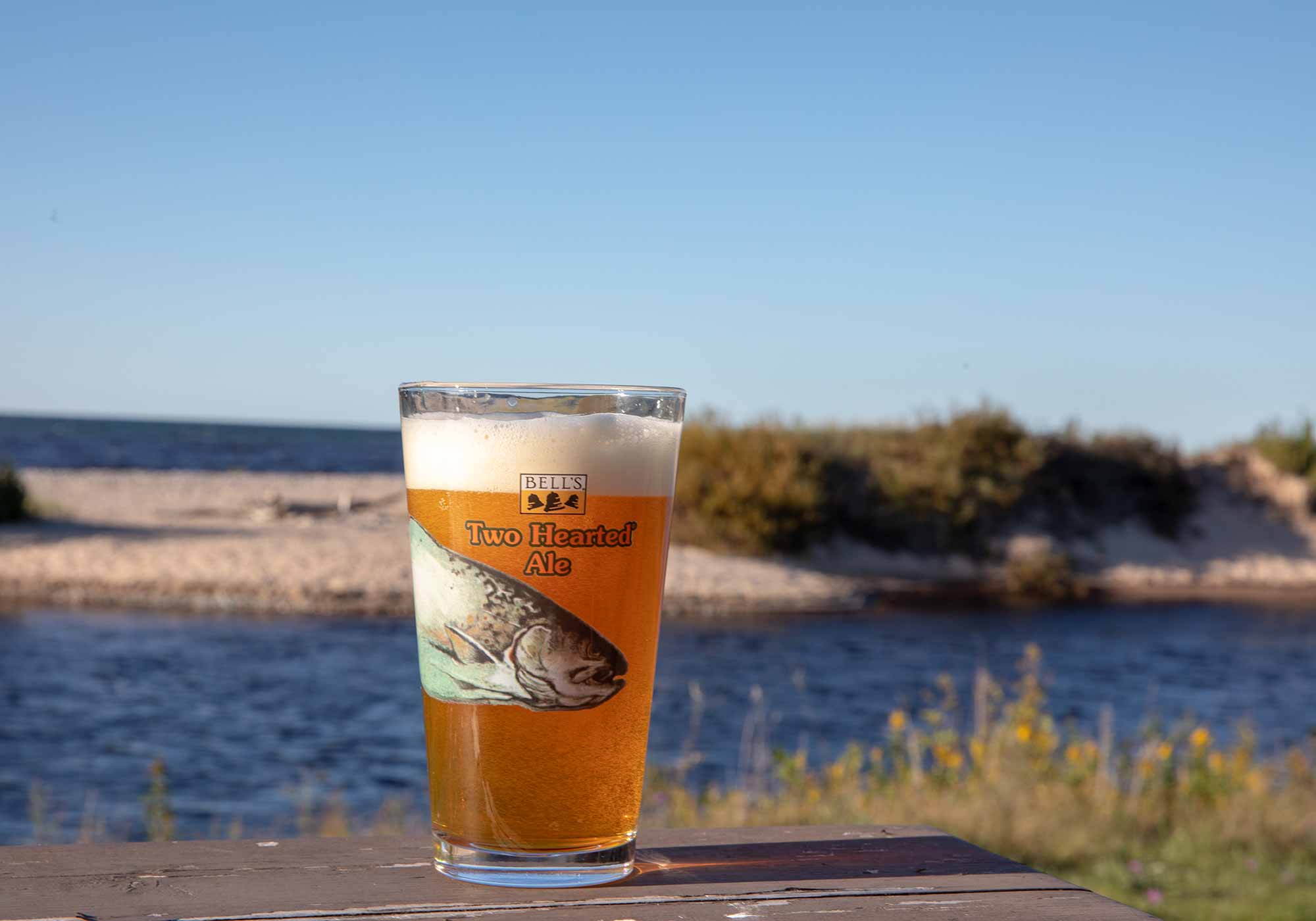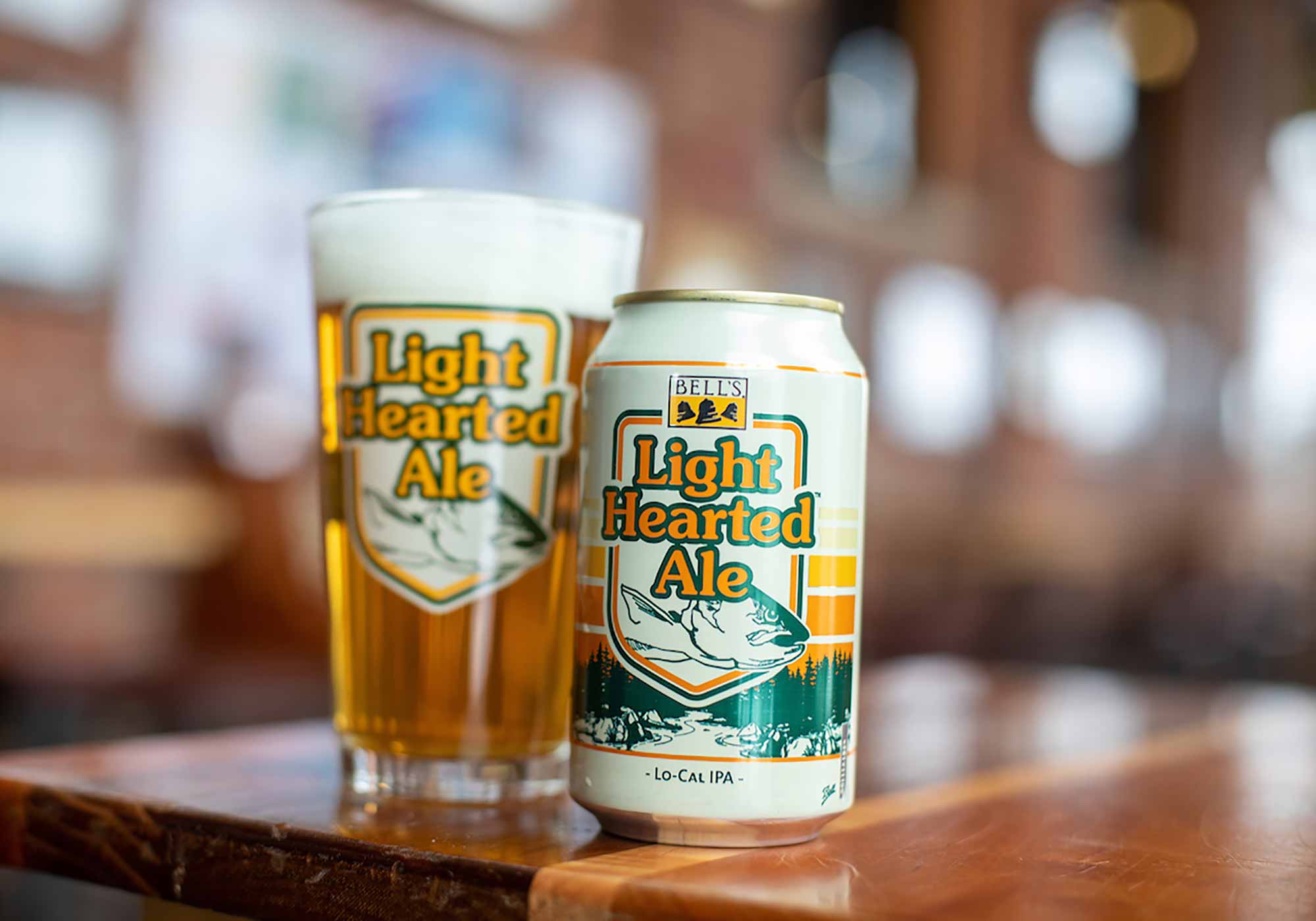Shop
25 Reasons Bell’s Two Hearted Ale is the Best Beer in America
One of America's best beers. Period.
There’s a river in Michigan’s Upper Peninsula that winds and wends its way along the coast of Lake Superior. Iconic for its incredible beauty, clear water, and several species of trout, the Two Hearted River is just one of Michigan’s magnificent natural landmarks. So it’s fitting that a beer of the same name has become one of the most beautiful and revered beers in the country. Recognized as the best beer in America for four years running by Zymurgy Magazine, Bell’s Two Hearted Ale has made more than just a splash in craft beer culture.

Photography courtesy of Bell’s Brewery
Bell’s Two Hearted Ale is the kind of consistent, dependable, high-quality product that comes along only once every few decades. It’s on par as a “style-defining beer” with Sierra Nevada Pale Ale, Allagash White, and its sister Bell’s Oberon.
However, Two Hearted didn’t rise to fame immediately. In fact, the story of this historic beer is as twisty and windy as its namesake river. As the beer approaches its twenty-five-year anniversary, it’s time to take a look at how one of America’s most famous beers came into existence.
The Origin of Bell’s Two Hearted Ale
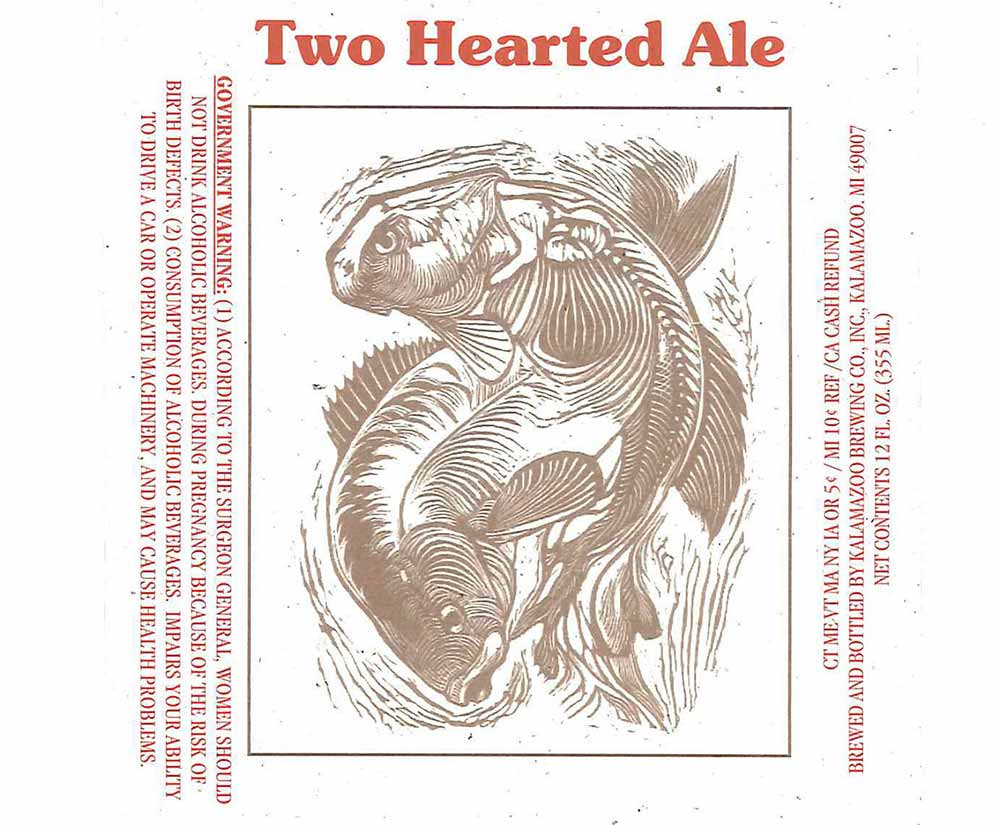
Photography courtesy of Bell’s Brewery
The story of Bell’s Two Hearted begins with a single hop and a single brewer. In 1992, Bell’s brewer Rob Skalla began experimenting with a single-hop recipe. Three years later, he suggested to Founder Larry Bell that the brewery try its hand at making an all-Centennial IPA.
At the time, Centennial hops had started to pick up some steam. Officially recognized as a hop in 1989 and named Centennial after the 100th birthday of Washington State, these Pacific Northwest hops became known for their aromatic pine, citrus, and floral notes.
Bell’s officially brewed the first batch of Two Hearted in 1997, but only as a winter seasonal. It’d take six more years before Two Hearted became a year-round offering.
Tweaking Two Hearted to Perfection
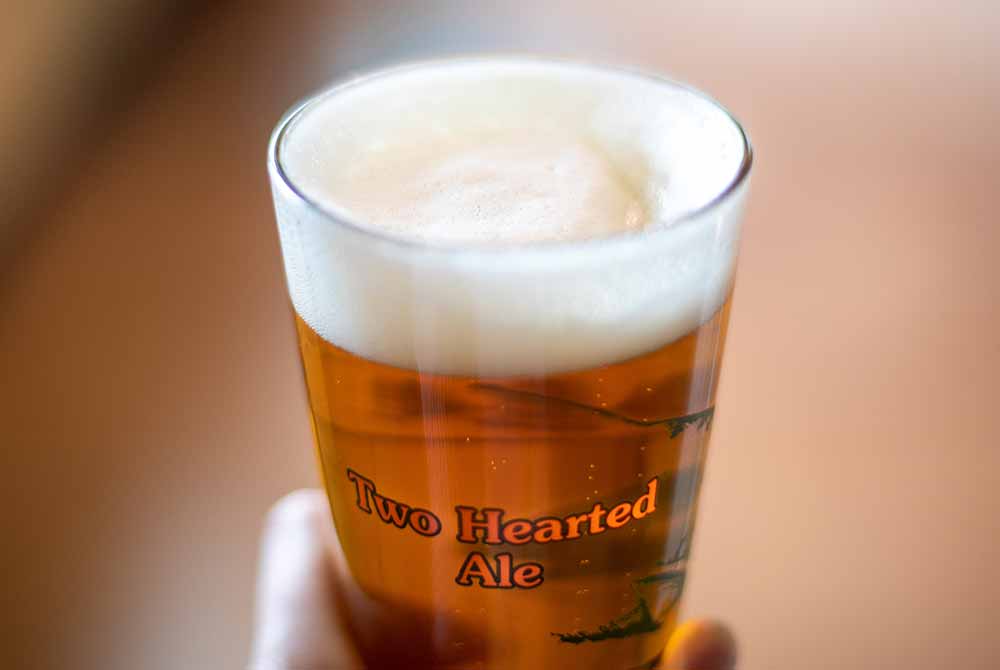
Photography courtesy of Bell’s Brewery
By 2004, John Mallett had taken over as Bell’s Brewmaster (he officially came to Bell’s in 2001). And during his two-decade tenure, Mallett and his brewing team perfected Two Hearted.
“We’ve done a lot of work over the years to get the beer to a place where it’s as delicious and as consistent as it can be,” says Mallett.
The recipe is simple. However, that simplicity belies the complexity of the brewing process.
“Conceptually, [Two Hearted] is a very simple beer: a single hop, Bell’s house yeast… and a fair amount of pale malt,” says Mallett. “It’s not super goofy. Yet, to make a simple beer like that requires a ton of complexity.”
To achieve a consistently great beer, Bell’s uses special tanks built just to brew Two Hearted. Instead of using the typical pencil-thin, rocket ship-shaped vessels, Bell’s leverages squashed down, shallow fermenters that allow the hops to disperse over a greater area.
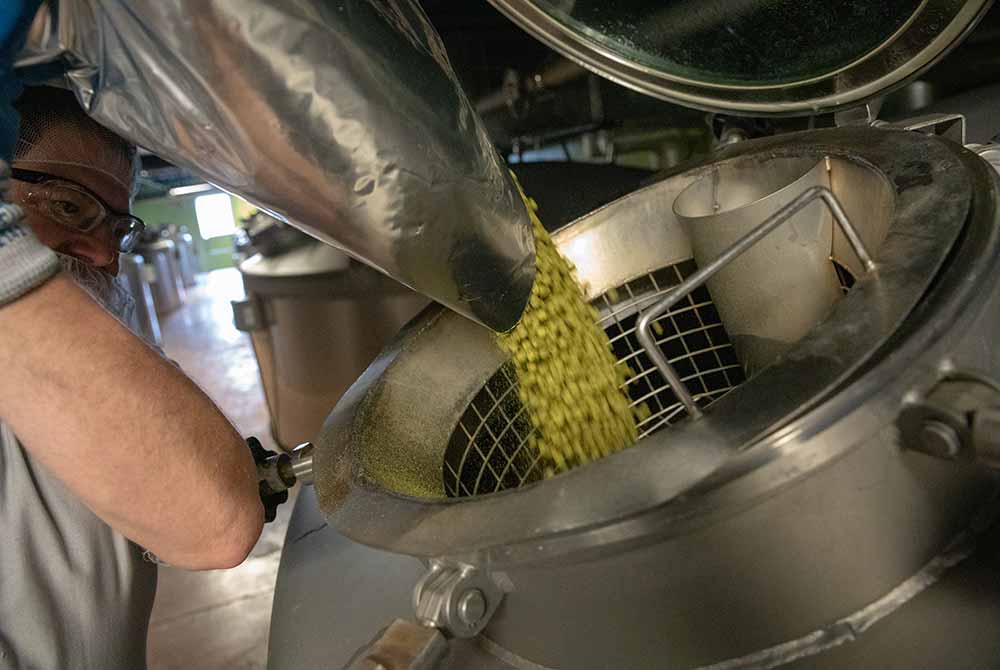
Photography courtesy of Bell’s Brewery
As Mallett explains, this innovation has a big impact on the flavor.
“Have we tried brewing in different tanks?” Mallett asks. “Yes. Do we feel we get a different flavor? Yes. So we stick with what we know. And what we know is that what we do tastes great, and I’m not about to change that.”
Two Hearted Starts in the Farmer’s Field
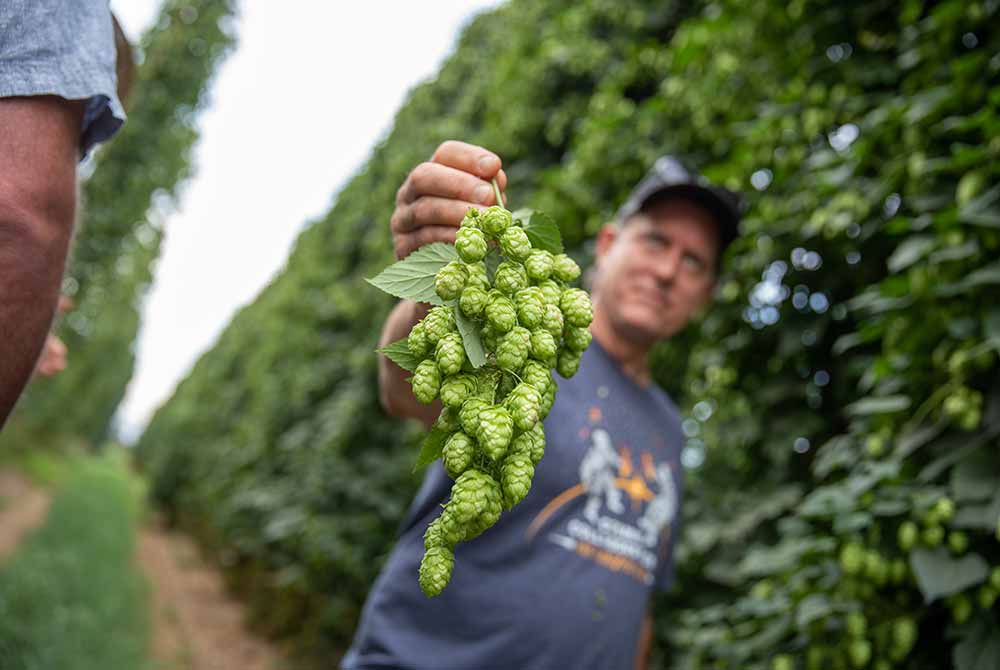
Photography courtesy of Bell’s Brewery
Since Bell’s is dedicated to making Two Hearted an all-Centennial IPA, they’ve also committed to finding the very best Centennial hops.
“I truly believe great beer starts in a field,” says Mallett. “Making sure the hops are grown in the right way for us to continue to maintain and even increase the quality of Two Hearted is important.”
With this in mind, Bell’s goes directly to a variety of sources for their Centennial hops. Working with a mix of individual growers as well as merchants such as Yakima Chief Hops (YCH) and Haas, they’re on a continual mission to source the perfect crop.
“A hop is not a hop is not a hop,” says Mallett. “Even a single varietal like Centennial has variability from lot to lot and grower to grower. The analogy I use consistently is this: Let’s say you, Fritz [Klug], and I agree we love bananas. A great banana is the perfect fruit experience. But maybe you love your bananas with yellow and a little spotting. Fritz, he’s a green banana guy. Me? I like them really ripe. So if you put three bananas out and say, which is the best banana? We’ll all point to something different and say, This is the best banana and truly mean it. However, they’re all different bananas. At Bell’s, we’ve determined what color of banana we want our hops to be.”
The brewery’s choosiness means that they’ve formed intense personal relationships with many individual hop growers. And it’s these special partnerships that have helped Two Hearted become the beer it is today.
Happy Hops Makes Happy Beer
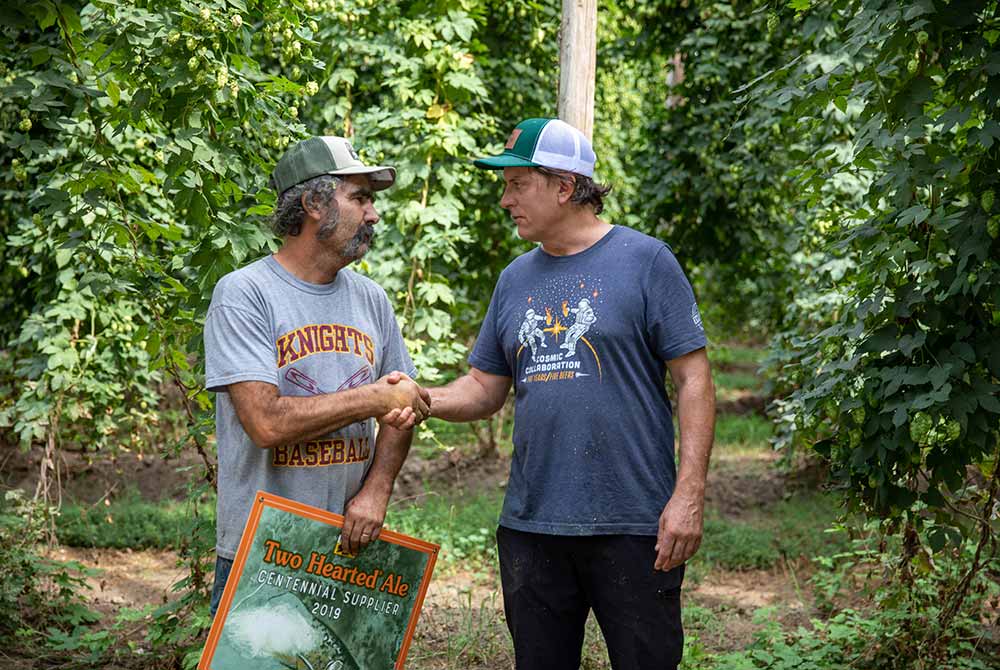
Photography courtesy of Bell’s Brewery
Just as Bell’s gets excited about finding the right Centennial lot for Two Hearted, the growers are equally as amped about growing the best crop.
“It’s amazing to see the excitement in [the farmers’] eyes when we give them Two Hearted,” says Fritz Klug, Digital Content Specialist at Bell’s. In 2019, Klug joined Mallett during hop selection in the Pacific Northwest. “They’re very vested in getting the quality we need.”
Similarly, Mallett recalls a special visit to CLS Farms, a family-owned hop farm in the Yakima Valley. After deciding to take a specific lot from that year’s harvest, “Shelley [Desmarais, the grower] turned to her husband Eric and said, I knew it. I knew that’s the one Bell’s would want!. To have that person putting their shoes in the soil every day and have them know the outcome… that’s a very deep relationship with our grower partners.”
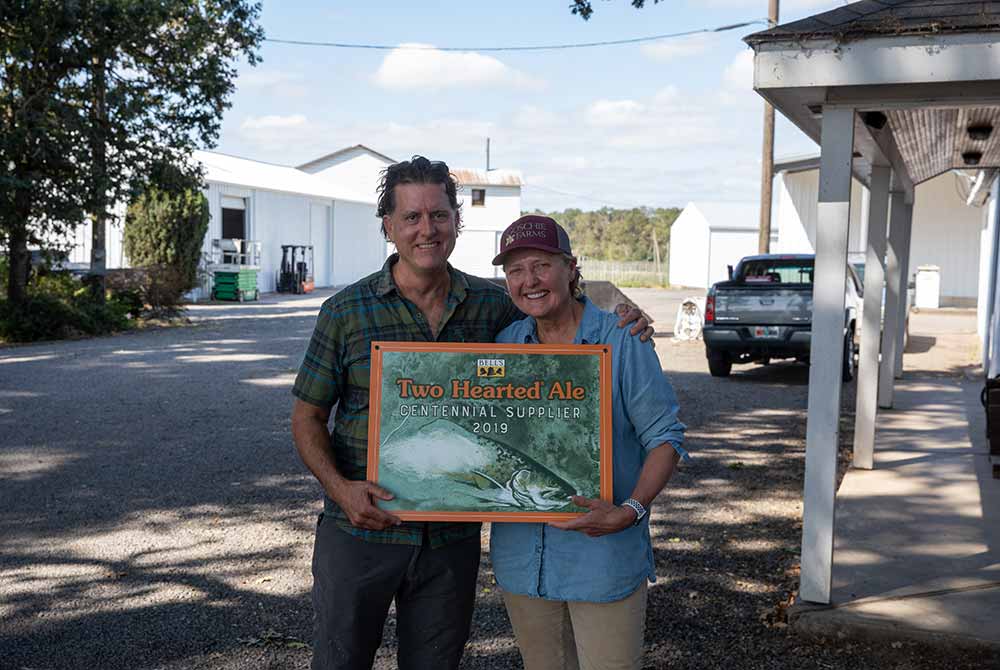
Photography courtesy of Bell’s Brewery
To express appreciation to their growers, Bell’s sends every farmer a tin tacker. The sign is something growers can hang on their wall to show to their staff and customers they’re a Centennial supplier for Two Hearted Ale.
“That’s a mark they’re very proud to display,” says Mallett.
In addition to sourcing Centennial from the Pacific Northwest, Bell’s started to tap into its local resources. Now, they’re also getting hops directly from Michigan growers such as MI Local. The focus on local fits very well with Bell’s ethos. Plus, they can interact even more closely with hops they pick for Two Hearted — without even leaving their backyard.
No Such Thing As Too Many Centennial Hops
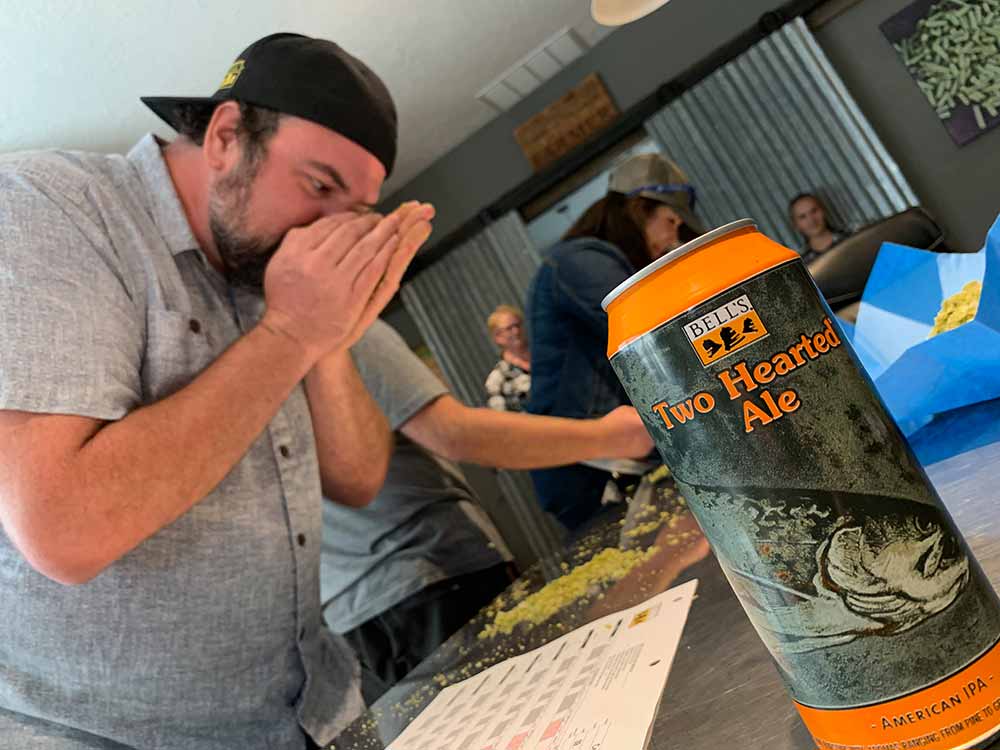
Photography courtesy of Bell’s Brewery
Beyond a careful hop selection process, Bell’s also keeps a sharp eye on the management of the hops throughout the supply chain. They buy all their Centennial hops in bale form with specific numbers so they can monitor them as they’re processed.
“We’re not saying, We’ll take that cow and just call me when the sausage is made,” says Mallett. “We’ll be there while the cow is turned into sausage to make sure it’s our cow.”
It’s paramount for Bell’s to have that meticulous oversight because the brewery is, in fact, the single largest user of Centennial hops in the world.
According to Mallett, Bell’s annually buys north of half a million pounds of Centennial. And Paul Bashaw, who is in charge of hop procurement and raw materials inventory control at Bell’s Brewery, says that this year Bell’s purchase of Centennial hops accounted for just a shade over 1/8th of the entire crop.
That’s a lot of Centennial hops.
This means paying attention to those seemingly tiny details at each step is paramount. But it all adds up to a very special beer.
Why Love Two Hearted Is Such a Beloved Beer
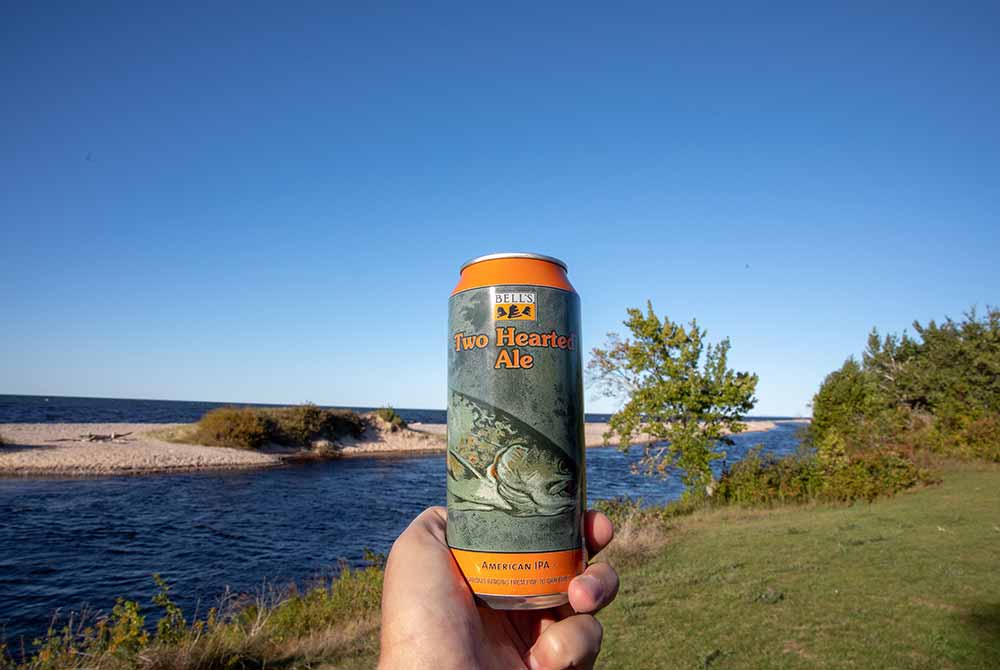
Photography courtesy of Bell’s Brewery
Like its namesake river, Two Hearted has wound its way into the hearts of consumers across the country.
“[Asking] why Two Hearted is good is like asking your mom why she loves you,” says Klug. “It’s amazing to see the continuous love and passion our fans have for this beer.”
Klug recounts a woman on social media asking the brewery to create a custom Two Hearted label to help her propose to her boyfriend.
Personally, Klug notes how Two Hearted has reflected times in his own life. At one point, he spent the last fifty dollars in his bank account to buy the only three six-packs at the local Circle K, just to share with friends. And when Bell’s first offered him a job, it was a pint of Two Hearted swayed Klug to accept.
At the time, Klug was a reporter and didn’t know if a career change was in the cards.
“I met up with some friends at a bar and I bought everyone a round of Two Hearted… I took one sip and said, I’m taking that job,” says Klug. “I thought, if I get to work with this, I’m definitely going to change careers.”
Even celebrities love Two Hearted.
Klug’s favorite Two Hearted story involves comedian Dave Chappelle. While on stage during a stand-up routine in Kalamazoo, the well-known comedian asked for a beer.
Someone handed him a plastic cup.
“Dave Chappelle takes a sip and says, Two Hearted Ale, why the hell did you put a fish on the label? What blew me away is that Dave Chappelle just took a sip out of this random beer in a plastic cup and knew it was Two Hearted,” says Klug.
And it’s not only consumers who love this beer. It’s folks in the industry, too.
Two Hearted: A Brewer’s Favorite
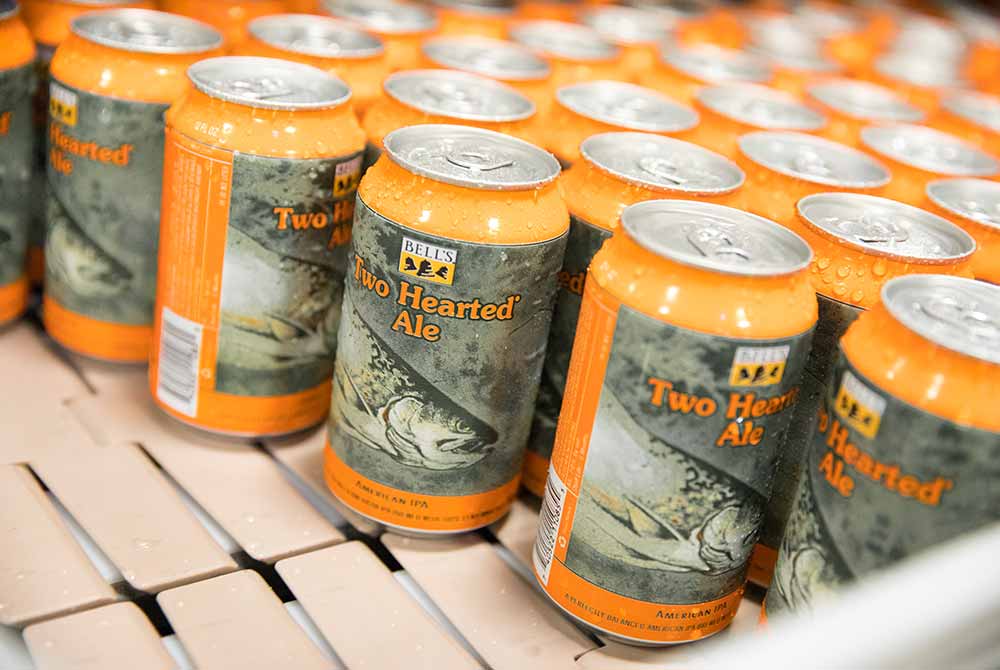
Photography courtesy of Bell’s Brewery
There are a few beers that craft brewers themselves point to as significant, style-defining beers. These are beers like Sierra Nevada Pale Ale, Allagash White, and Bell’s Two Hearted.
Mallett has been flown to — and presented about beer on — every continent except Antarctica. And often, he chats about hops.
“If you’re talking Cascade, everyone points to Sierra Nevada Pale Ale because that’s the flavor. And that is the case with Centennial and Two Hearted,” he says. “[Two Hearted] defines that hop in the eyes of many brewers in the world. I think it’s pretty cool that they’re pointing to the yellow banana with light black spots to say, That is what the banana should taste like.”
When Erica Vitkin, Bell’s Trade and Market Activation Manager, took a trip to Maine, she brought cases of Bell’s beer that included rare products like Bell’s Black Note and The Wild One. However, when she shared her wares with brewers, they bypassed the rare beers and went straight to Two Hearted.
“They see these rare 750s and barrel-aged beers and they’re excited, but nowhere near as excited as they are about Two Hearted,” says Klug. “She told me that in the future, she’s just going to bring Two Hearted because it’s like gold.”
Two Hearted is Beer Gold
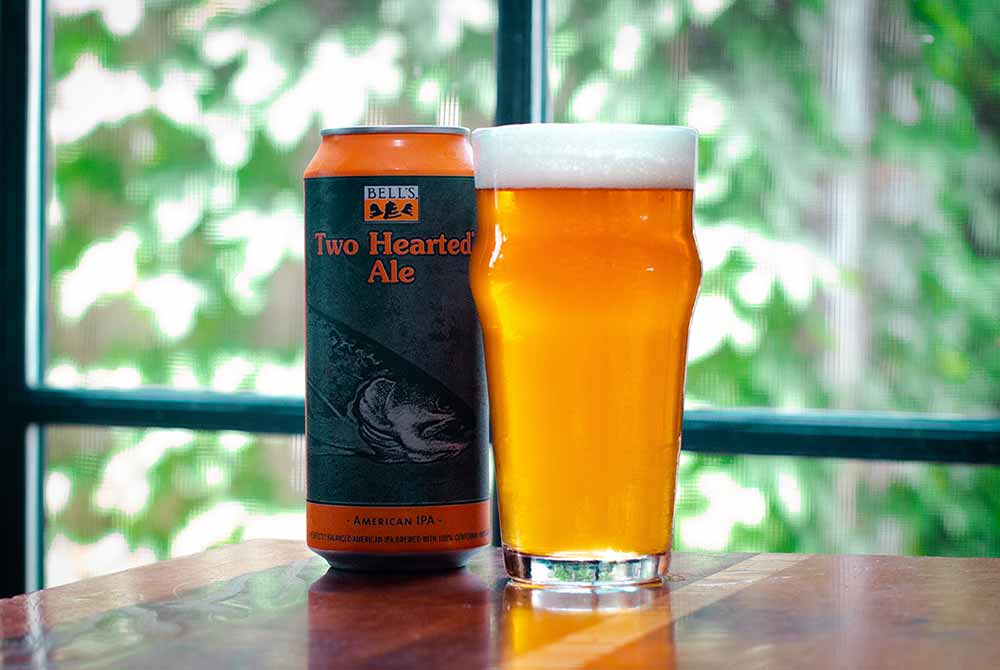
Photography courtesy of Bell’s Brewery
Gold is a great way to describe Two Hearted. For four years in a row, Zymurgy Magazine — a publication of the American Homebrewers Association — voted Two Hearted the Best Beer in America.
Now running in its eighteenth year, the survey asks members to choose up to five of their favorite commercial beers that are available in the U.S.
For many years, it was Russian River Brewing Company’s Pliny the Elder that took top marks. And as Mallett says, Natalie and Vinnie Cilurzo, who own Russian River Brewing Co., are good friends — and huge Two Hearted fans.
“I can’t buy their beer where I live, and they can‘t buy my beer where they live, but somehow there is some kind of special beer tunnel that occurs,” he says. “They will share it with certain staff that are just die hard. Even down to their lawyer – [Two Hearted] is his favorite beer.”
In 2017, Two Hearted bumped off Pliny the Elder for the title of Best Beer in America. And since then, Bell’s hasn’t looked back.
What Does Bell’s Two Hearted Ale Taste Like?
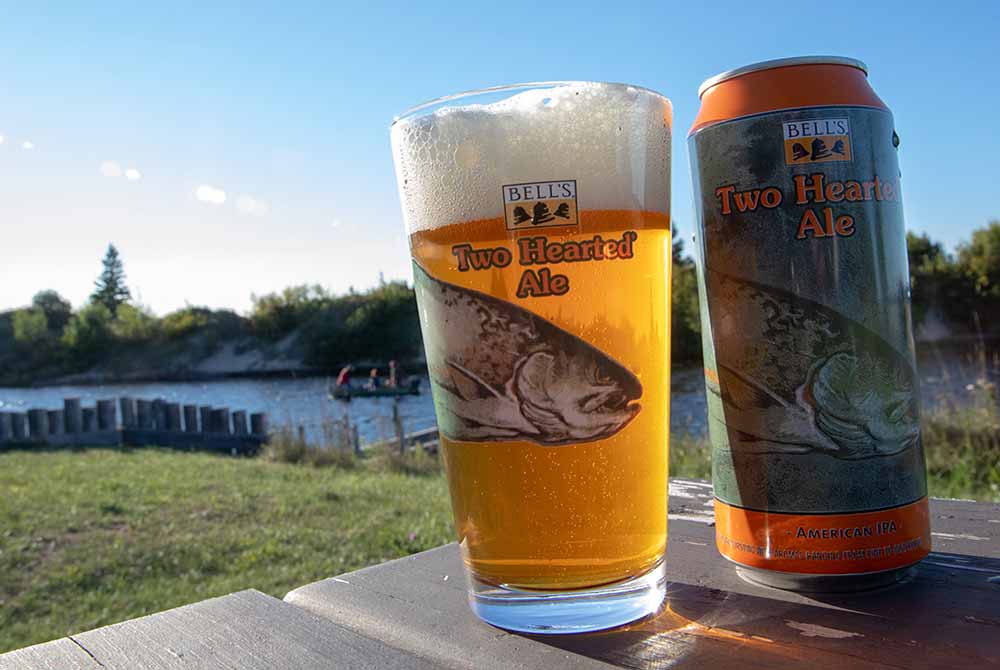
Photography courtesy of Bell’s Brewery
The taste of Two Hearted starts with the appearance. Before one even tastes the beer, the first thing they’ll notice is the color.
“There is this really beautiful white foam on top of this light coppery, slightly hazy almost opalescent beer,” says Mallett, who indicates that foam is important because it shows the brewer has used high-quality ingredients. “My mouth is already starting to water because I know what comes next.”
And that’s the aromas. Two Hearted gives off a “geranium and rose essence,” says Mallett. “That combination of fruit and flower is lovely.” Tastewise, it’s beautifully floral and fruity with a little bit of pine and a slightly sweet and malty backbone.
Interestingly enough, Two Hearted uses a fair amount of pale ale malt to give the beer a classic malty flavor that sets it apart from other IPAs.
“[Two Hearted] is not a blank white piece of paper upon which a hop is imprinted,” says Mallett. “Instead, it’s this rich, fully textured background upon which those flavors are presented.”
The pale ale malt addition is a big differentiator in the Two Hearted recipe.
“As I drink different IPAs from around the country I can bucket them… in a specific category,” says Mallett. “If you were to graph those [IPAs] out, Two Hearted is out there on its own… because there is that residual sweetness and maltiness.”
It’s just one more minuscule — but meticulous — detail that has contributed to Two Hearted’s rise as a seminal beer.
What’s Next for Bell’s Two Hearted?
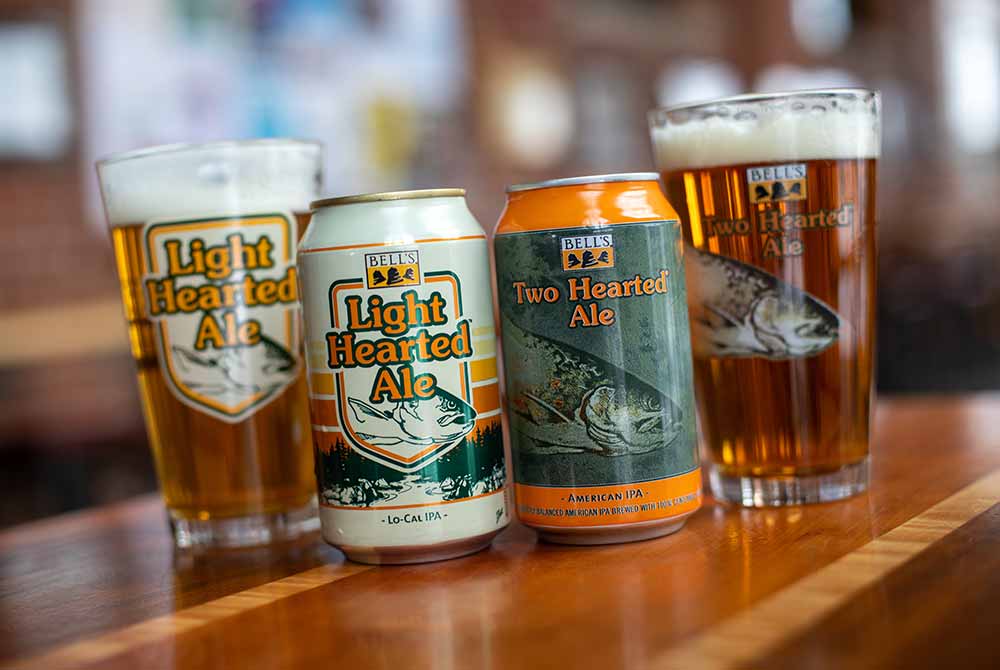
Photography courtesy of Bell’s Brewery
In 2013, Two Hearted surpassed another iconic Bell’s beer — Bell’s Oberon — as the brewery’s best-seller.
“This beer is beloved by many,” says Mallett. “It’s just super well balanced. It’s a delightful beer to drink. What else is there to say?”
The secret to the beer’s success isn’t necessarily innovation. Rather, what has made this beer an icon in craft beer culture has been its consistency. ability to be brilliant in formulation and execution each and every time. But that’s not to say Bell’s hasn’t experimented on the formula.
Recently, the brewery has played around with several variations including a lower-ABV, lower-calorie version called Light Hearted. They’ve also made Double Two Hearted, a double IPA version with two and half times the amount of Centennial hops. Then there’s Cold Hearted, an India Pale Ale-style pale lager, and Black Hearted, a black IPA, which have both popped up in the Kalamazoo pub.
However, in the end, people always go back to the classic Two Hearted. It’s that reliable, dependable, award-winning beer that has created a cult-like following across the world.
“I love trying new beers but sometimes I have so much going on in my life that I just want to fall back on something I love and that’s dependable,” says Klug. “Two Hearted is that for so many people.”

